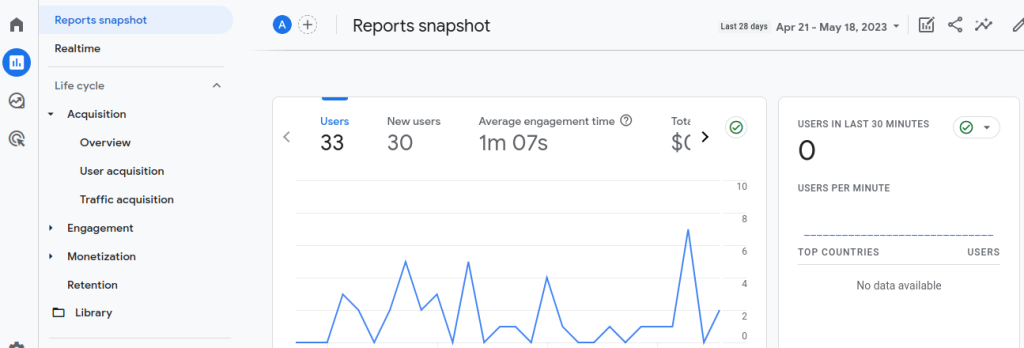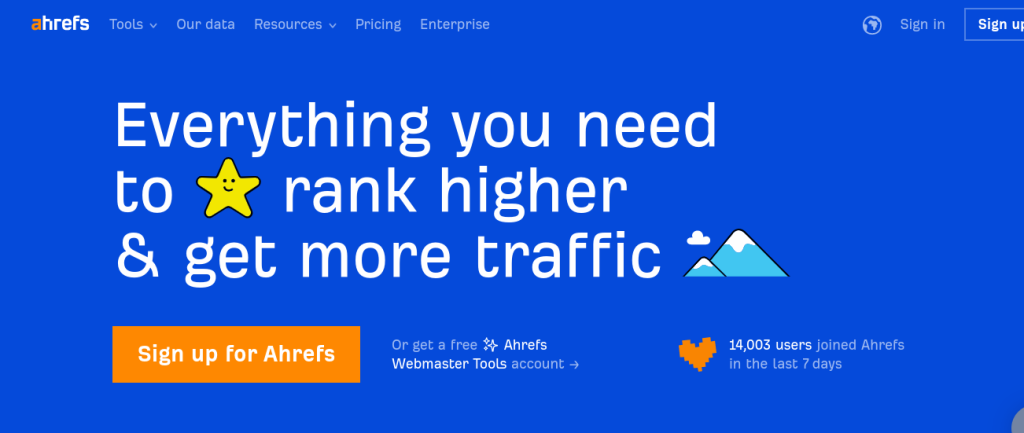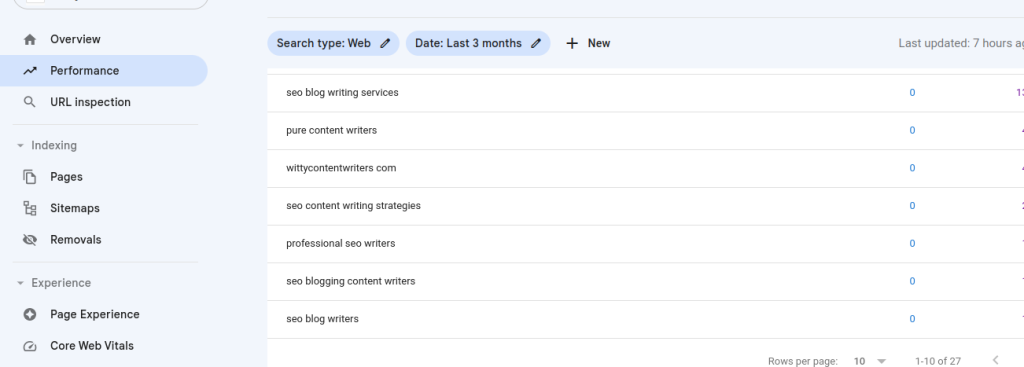Unlocking the secrets of search engine optimization (SEO) can feel like a never-ending quest, but one of the most crucial elements to conquer is the art of keyword selection. 72% of marketers say relevant content creation is the most effective SEO and adapting an effective keyword research techniques will help you create content that can be found.
It’s important to understand that the goal of effective keyword research is not just to find popular words or phrases, but to identify the phrases your target audience is actively searching for.
Doing this will help you create content that speaks directly to their needs, increasing your chances of ranking higher on search engine results pages (SERPs).
In this article, we’ll cover the following steps to help you choose the right keywords for your SEO content strategy for maximum SEO impact. So, let’s get started!
What Does Effective Keyword Research Look Like and why is it important for SEO?
Effective Keyword research is the process of identifying and analyzing the search terms that people use to find information on search engines like Google.
It involves researching and selecting the most relevant and valuable keywords for your website or content.
Adapting effective Keyword research techniques is important for SEO content strategy because it helps you understand what your target audience is searching for and what keywords they are using to find information related to your business or industry.
Understanding the Importance of keyword research
Following effective keyword research techniques is the foundation of any successful SEO content strategy. It’s vital to understand its importance because it helps you identify the terms and phrases that your target audience is searching for.
By optimizing your content with the right keywords, you increase your chances of ranking higher on search engines, driving more organic traffic to your site, and ultimately, converting visitors into customers. Here are five effective keyword research techniques you should follow in your SEO content strategy.
1.Brainstorming and expanding your list of potential keywords
Brainstorming is the first crucial step to building a solid list of potential keywords for your SEO content strategy. To get started, gather your team and jot down all the relevant words and phrases that come to mind when thinking about your product, service, or niche.
For example, if you have a pet food distribution business, you can brainstorm keywords like;
cat food
dog food
Economy pet food
natural pet food
pet food suppliers etc
After brainstorming relevant keywords, you can then use keyword research tools like Ahrefs and SEMrush to expand it and identify new opportunities.
Once you have an initial list, use keyword research tools These tools will also help you analyze the competition and search volume for each keyword. Some popular tools include:
- Google Keyword Planner: A free tool that provides data on search volume, competition, and related keywords.
- SEMrush: A comprehensive premium SEO tool that offers keyword research, competition analysis, and more.
- Ahrefs’ Keywords Explorer: A powerful premium SEO tool that provides search volume, keyword difficulty, and related terms.
2. Get Ideas From Your Audience
Identifying and understanding your audience is the most important step in keyword research. You need to understand their needs, preferences, and the language they use will help you create content that resonates with them.
For example, when writing for an audience base in the UK, it would be best to use a keyword with ‘flats’ other than ‘apartments’
Understanding your audience will help you anticipate the terms they search for and align your content accordingly. This will not only improve your search engine rankings but also enhance user experience.
Your target audience should always be in mind for an effective keyword research technique. Always consider their needs, preferences, and the language they use. To find out what they’re searching for, try these tactics:
- Conduct surveys or polls to learn about their interests and pain points.
- Monitor social media discussions and forums to see what topics are trending.
- Read blog comments and reviews to find out what questions they ask.
3. Analyze Your Competitors
Look at the websites that are currently ranking for your target keywords. Pay attention to the content format and the specific language they use to satisfy the search intent.
By understanding how your competitors address the search intent, you can create content that outperforms them. This will help you find potential keyword gaps to fill and improve your rankings. To analyze your competitors, you can:
- Manually review their websites and look for relevant keywords in their content, headings, and meta tags.
- Use tools like Ahrefs or SEMrush to discover their top-ranking keywords and see how well they perform.
- Find out the keywords your competitors are ranking for using tools like SEMrush and Ahrefs and identify content gaps you can explore
Utilizing these effective keyword research techniques will help you create a comprehensive list of potential keywords that will make your SEO content strategy thrive.
3.Choose Keywords that Satisfy the Search Intent
In today’s competitive online landscape, it’s essential to create content that not only ranks high in search engines but also satisfies the search intent of your target audience.
Choosing keywords that fulfil the search intent will have a significant impact on your SEO content strategy.
Here’s how to make sure your chosen keywords align with your audience’s search intent.
Understand the four types of search intent
There are four primary categories of search intent:
Informational -It revolves around users looking for answers to their questions.
Navigational– Navigational intent is when users want to find a specific website or page.
Transactional– Transactional intent consists of users looking to make a purchase
Commercial-It revolves around users researching products or services to potentially buy later.
4. Optimize your content to match the search intent
Once you’ve identified the search intent for your target keywords, ensure that your content directly addresses it. For example, if users are looking for information, provide them with comprehensive and well-structured content.
If they’re looking to make a purchase, make it easy for them to do so by including clear calls-to-action and easy navigation.
Selecting keywords that satisfy the search intent is crucial for the success of your SEO content strategy. By understanding the different types of search intent, analyzing your competitors, and optimizing your content accordingly, you can ensure maximum impact and provide valuable content for your target audience.
Measuring the success of your keyword strategy with analytics
So, you’ve chosen your keywords and implemented them into your content.
But how do you know if it’s working?
The key to measuring the success of your SEO keyword strategy lies in utilizing analytics to track your progress. Let’s dive into how to measure your keyword strategy’s effectiveness.
Google Analytics

Google Analytics is a powerful free tool that allows you to track various metrics related to your website’s performance. By measuring organic search traffic and analyzing the behaviour of visitors who arrive via specific keywords, you can determine how well your strategy is working.
Keep an eye out for metrics like bounce rate, time on site, and conversions to fine-tune your approach.
Keyword ranking tools

There are numerous keyword ranking tools available, such as Google Search Console, Ahrefs, and SEMrush. These tools provide valuable insights and data into your website’s keyword rankings, enabling you to see how your chosen keywords are performing in search engine results pages (SERPs).
By monitoring your keyword rankings, you can identify areas for improvement and adapt your strategy accordingly.
Google Search Console

Google Search Console is a tool by Google that helps website owners monitor and optimize their site’s performance in search results. It provides data on keywords driving traffic, click-through rates, indexing issues, and insights on internal linking. While not a dedicated keyword research tool, it offers valuable information to refine keyword strategies and improve website visibility.
FAQs
Should I focus on high-traffic or low-competition keywords?
In the quest to choose the right keywords for your SEO content strategy, you may find yourself wondering whether to focus on high-traffic or low-competition keywords.Here is an analysis highlighting the pros and cons of targeting low-competition or high-competition keywords.
High-Traffic Keywords: The Pros and Cons
High-traffic keywords are search terms that receive a large volume of searches each month. Ranking for these keywords can lead to significant visibility and traffic for your website.
However, with great potential comes great competition. These keywords are often more difficult to rank for because many businesses are vying for the same audience.
- Pros: High visibility, potential for significant traffic
- Cons: High competition, more difficult to rank for, may require significant resources
Low-Competition Keywords: The Pros and Cons
Low-competition keywords, on the other hand, are search terms with less competition and generally lower search volume. These keywords can be easier to rank for, allowing your website to gain traction more quickly.
“If you don’t have a long-tail SEO strategy, you’re missing out.”
Aleh Barysevich, Founder of SEO PowerSuite
However, the trade-off is that these keywords typically drive less overall traffic to your website.
- Pros: Easier to rank for, less competition, quicker results
- Cons: Lower search volume, may provide less overall traffic
The decision to focus on high-traffic or low-competition keywords will depend on your specific goals, resources, website authoritativeness and the competitive landscape of your industry.
A well-rounded SEO content strategy often involves targeting a mix of both high-traffic and low-competition keywords to strike a balance between visibility and attainability.
By carefully considering your business objectives and the realities of your niche, you can create a keyword strategy that maximizes your chances for success.
Are there any common mistakes to avoid when choosing keywords for SEO?
There’s no denying that choosing the right keywords for your SEO content strategy is crucial to your success. However, it’s easy to make mistakes along the way.
To help you understand mistakes to avoid, here are common mistake people make that cost their SEO efforts
Targeting overly competitive keywords
While it may be tempting to go after the most popular keywords in your industry, the competition for these terms can be fierce.
Instead, focus on finding niche keywords with lower competition, as these can yield better results and help your content rank higher in search engine results pages (SERPs).
Ignoring long-tail keywords
Long-tail keywords often have less competition and higher conversion rates. By neglecting these valuable terms, you miss out on a significant portion of potential traffic. Research shows that about 50% of search queries are four words or longer and targeting these queries will help you create more SEO impact.
Be sure to incorporate long-tail keywords into your content strategy for maximum impact.
Focusing solely on search volume
While it’s important to target keywords with a decent search volume, it’s equally crucial to consider other factors such as user intent and competition.
High search volume doesn’t always translate to high conversions or engagement. Remember, the ultimate goal is to attract an audience that finds value in your content and is likely to convert.
Choosing the right keywords for your SEO content strategy is a delicate balancing act. Avoid making the above mistakes and focus on niche, long-tail keywords with the right search volume and user intent to maximize your SEO impact and drive more traffic to your website.
The goal of an effective keyword technique is to drive conversions. After writing your content, always track the conversion rates for the specific keywords you’ve targeted. This could include actions like newsletter sign-ups, product purchases, or contact form submissions.
By identifying which keywords are driving the most conversions, you can focus on optimizing your content to capitalize on these high-performing terms.

